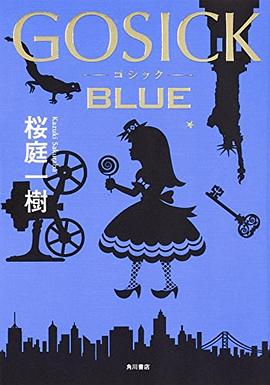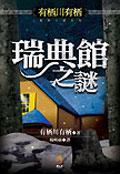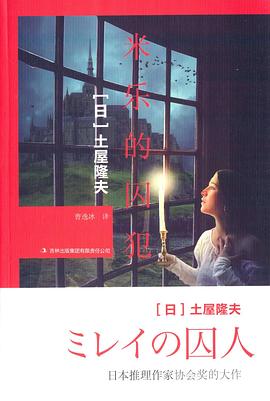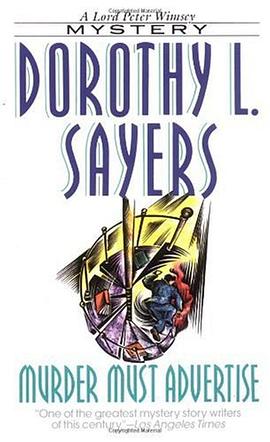
具体描述
Begun in 1923 and published 1930, The Bridge is Crane's major work. "Very roughly," he wrote a friend, "it concerns a mystical synthesis of 'America' . . . The initial impulses of 'our people' will have to be gathered up toward the climax of the bridge, symbol of our constructive future, our unique identity."
作者简介
Hart Crane was born in Garrettsville, Ohio. His father, Clarence, was a successful Ohio businessman who had made his fortune in the candy business with chocolate bars. He originally held the patent for the Life Saver, but sold his interest to another businessman just before the candy became popular. Crane’s mother and father were constantly fighting, and early in April, 1917, they divorced. It was shortly thereafter that Hart dropped out of high school and headed to New York City. Between 1917 and 1924 he moved back and forth between New York and Cleveland, working as an advertising copywriter and a worker in his father’s factory. From Crane's letters, it appears that New York was where he felt most at home, and much of his poetry is set there.
Crane was gay. As a boy, he had been seduced by an older man. He associated his sexuality with his vocation as a poet. Raised in the Christian Science tradition of his mother, he never ceased to view himself as a social pariah. However, as poems such as "Repose of Rivers" make clear, he felt that this sense of alienation was necessary in order for him to attain the visionary insight that formed the basis for his poetic work.
Throughout the early 1920s, small but well-respected literary magazines published some of Crane’s lyrics, gaining him, among the avant-garde, a respect that White Buildings (1926), his first volume, ratified and strengthened. White Buildings contains many of Crane’s best lyrics, including "For the Marriage of Faustus and Helen," and a powerful sequence of erotic poems called "Voyages," written while he was falling in love with Emil Opffer, a Danish merchant mariner.
"Faustus and Helen" was part of a larger artistic struggle to meet modernity with something more than despair. Crane identified T. S. Eliot with that kind of despair, and while he acknowledged the greatness of The Waste Land, he also said it was "so damned dead," an impasse, and a refusal to see "certain spiritual events and possibilities." Crane’s self-appointed work would be to bring those spiritual events and possibilities to poetic life, and so create "a mystical synthesis of America." This ambition would finally issue in The Bridge (1930), where the Brooklyn Bridge is both the poem’s central symbol and its poetic starting point.
The Bridge received poor reviews by and large, but worse was Crane’s own sense of his work's failure. It was during the late '20s, while he was finishing The Bridge, that his drinking, always a problem, became notably worse.
While on a Guggenheim Fellowship in Mexico in 1931-32, his drinking continued while he suffered from bouts of alternating depression and elation. His only heterosexual relationship - with Peggy Cowley, the soon to be ex-wife of his friend Malcolm Cowley, who joined Crane in the south when the Cowleys agreed to divorce - began here, and "The Broken Tower," one of his last published poems, emerges from that affair. Crane still felt himself a failure, though, in part because he recommenced homosexual activity in spite of his relationship with Cowley. Just before noon on 27 April 1932, while onboard the steamship SS Orizaba heading back to New York from Mexico - right after he was beaten for making sexual advances to a male crew member, which may have appeared to confirm his idea that one could not be happy as a homosexual - he committed suicide by jumping into the Gulf of Mexico. Although he had been drinking heavily and left no suicide note, witnesses believed Crane's intentions to be suicidal, as several reported that he exclaimed "Goodbye, everybody!" before throwing himself overboard.
His body was never recovered. A marker on his father's tombstone in Garrettsville includes the inscription, "Harold Hart Crane 1899-1932 LOST AT SEA".
目录信息
读后感
评分
评分
评分
评分
用户评价
我真的看不懂
评分has always been a larger-than-life,half-mythical place,and this collection offers an appropriately stunning mosaic ????
评分has always been a larger-than-life,half-mythical place,and this collection offers an appropriately stunning mosaic ????
评分has always been a larger-than-life,half-mythical place,and this collection offers an appropriately stunning mosaic ????
评分has always been a larger-than-life,half-mythical place,and this collection offers an appropriately stunning mosaic ????
相关图书
本站所有内容均为互联网搜索引擎提供的公开搜索信息,本站不存储任何数据与内容,任何内容与数据均与本站无关,如有需要请联系相关搜索引擎包括但不限于百度,google,bing,sogou 等
© 2025 qciss.net All Rights Reserved. 小哈图书下载中心 版权所有





















